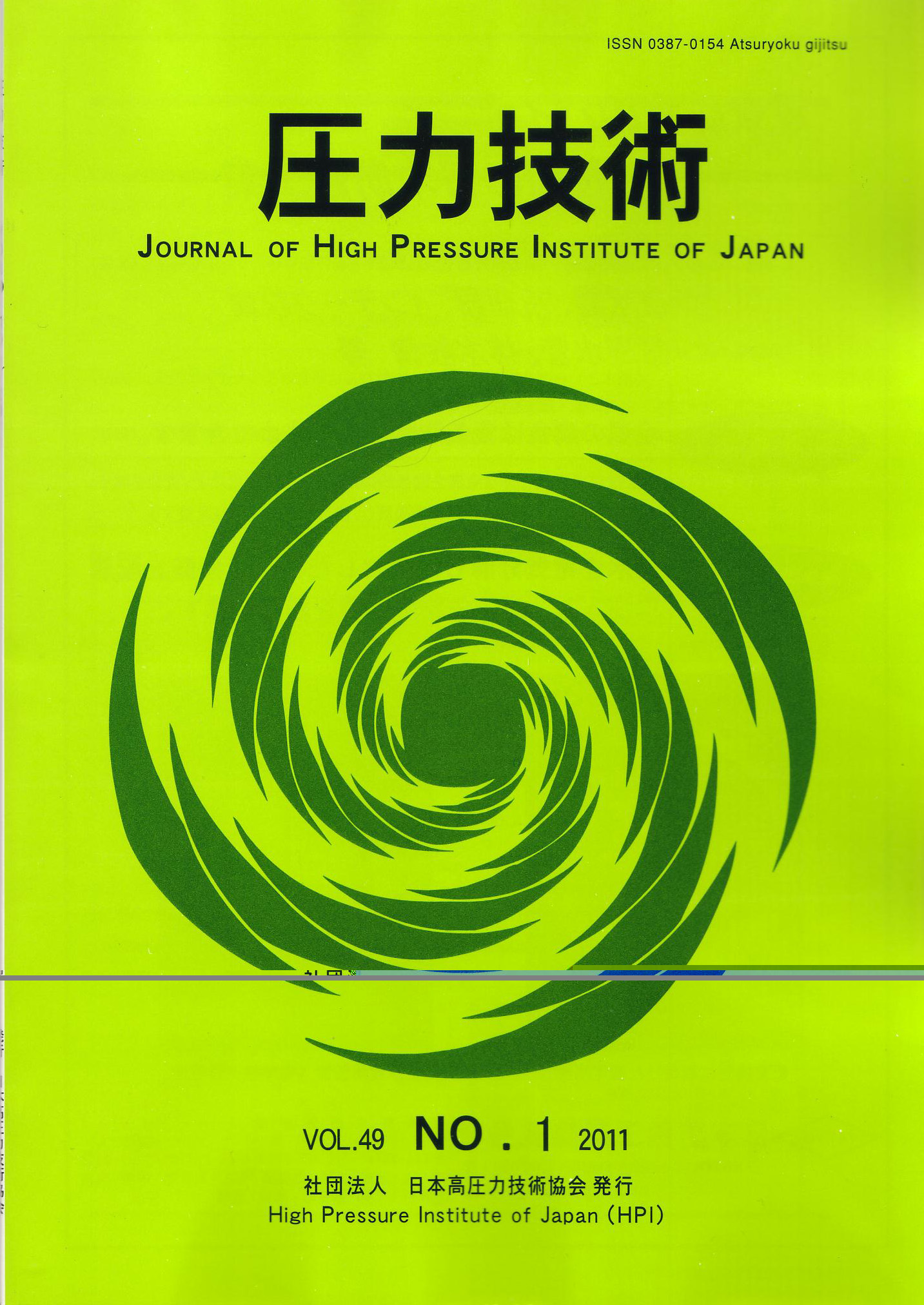巻号一覧

44 巻 (2006)
- 6 号 p. 322-
- 5 号 p. 248-
- 4 号 p. 174-
- 3 号 p. 124-
- 2 号 p. 68-
- 1 号 p. 3-
前身誌
44 巻, 3 号
選択された号の論文の4件中1~4を表示しています
- |<
- <
- 1
- >
- >|
論文
-
川井 五作, 越智 秀, 山口 博, 辻野 良二, 山本 義秋2006 年 44 巻 3 号 p. 124-129
発行日: 2006年
公開日: 2006/06/20
ジャーナル フリーFriction welding of C4641 naval brass to C1100 tough pitch copper was carried out to examine this weldability. Joint strength was evaluated from tensile, bending and impact strength. The tensile strength which is almost equivalent to that of C1100 base metal could be obtained under the wide welding conditions. An intermetallic formation at the weld interface of joints was not observed. The naval brass adjacent to the weld interface was softened and tensile fracture occurred in this softened area. The joint efficiencies in bending testing and impact testing of joints welded under a large upset pressure were 87% and 47%, respectively.抄録全体を表示PDF形式でダウンロード (510K) -
高守 謙郎, 鈴木 俊一, 大木 俊, 山下 裕宣, 二見 常夫, 安斎 英哉, 加藤 隆彦, 斉藤 善章, 坪田 基司2006 年 44 巻 3 号 p. 130-142
発行日: 2006年
公開日: 2006/06/20
ジャーナル フリーL-grade stainless steels as 316NG, SUS316L and SUS304L are used for the BWR reactor internals and re-circulation pipes. The L-grade stainless steels are known for typical SCC resistant materials because they are hardly thermally sensitized in usual welding process due to its lower carbon contents. However SCC of the L-grade material components were reported recently. The detail investigation of the components showed that the hardness of the surface was very high where the SCC was observed. There was no grain boundary segregation of Chromium. Therefore the fabrication process such as welding, machining and surface finishing are strongly assumed to accelerate the SCC initiation.
The test samples were made from the mock up shroud to simulate the fabrication process especially welding and surface finish process and the SCC tests were conducted. The result shows that hard machining and grinder work to the surface could induce SCC to the L-grade stainless steel. The polishing, water jet peening and laser peening can improve the surface residual stress from tension to compression, thus the SCC initiation is suppressed. Hydrogen water chemistry (HWC) also reduces the susceptibility of SCC initiation.抄録全体を表示PDF形式でダウンロード (1796K) -
佐藤 拓哉, 門 謙一郎2006 年 44 巻 3 号 p. 143-152
発行日: 2006年
公開日: 2006/06/20
ジャーナル フリーThe dissimilar material flange connections are often adopted to connect the austenite stainless steel pipes to the low alloy steel pressure vessels operated at an elevated temperature. The behavior of this flange connection is very complicated because of the non-uniform temperature distribution and the thermal expansion difference of dissimilar materials. The application of the metal ring joint gasket makes the behavior more complicated. An elastic plastic finite element analysis is one of the adequate ways to investigate the behavior of the following dissimilar material flanges with the ring joint gasket under the high pressure and elevated temperature operation. (1) Pipe flange:standard configuration, austenite stainless steel, (2) Nozzle flange:forged thick nozzle neck, low alloy steel covered with stainless steel overlay. The material of ring joint gasket is also an austenite stainless steel. This ring joint gasket contacts to and slips on the ring groove surfaces of flanges. The axi-symmetric analyses were made considering the sequence of initial bolting, internal pressure and non-uniform temperature distribution. The elastic plastic properties and temperature dependency of the materials were considered. From these analyses, the effects of the non-uniform temperature distribution and the thermal expansion difference of dissimilar material flanges on the contact pressure of the ring joint gaskets were made clear. The effect of flange size (14”-36”) was also investigated.抄録全体を表示PDF形式でダウンロード (480K)
講座
-
酒井 信介2006 年 44 巻 3 号 p. 153-161
発行日: 2006年
公開日: 2006/06/20
ジャーナル フリーThis paper summarizes the fundamentals for risk based engineering mainly focusing on risk assessment. Typically, risk based inspection requires the plant owners to evaluate risk measure at each inspection occasion. Therefore, improved skill concerning risk based engineering is required. Since risk is defined as probability of failure multiplied by consequence, owners must specify the damage mode of the evaluated portion, evaluate probability of failure (PoF) for the parts and consequence of failure (CoF) . In order to conduct risk assessment, analyst is required to be familiar with probabilistic treatment. In this paper, fundamentals concerning risk assessment, such as, general procedure for risk assessment, system description, method for decision making using risk will be addressed.抄録全体を表示PDF形式でダウンロード (234K)
- |<
- <
- 1
- >
- >|